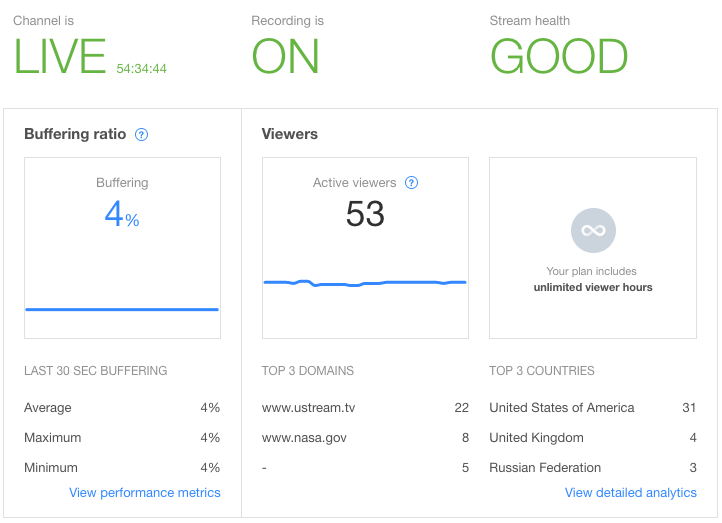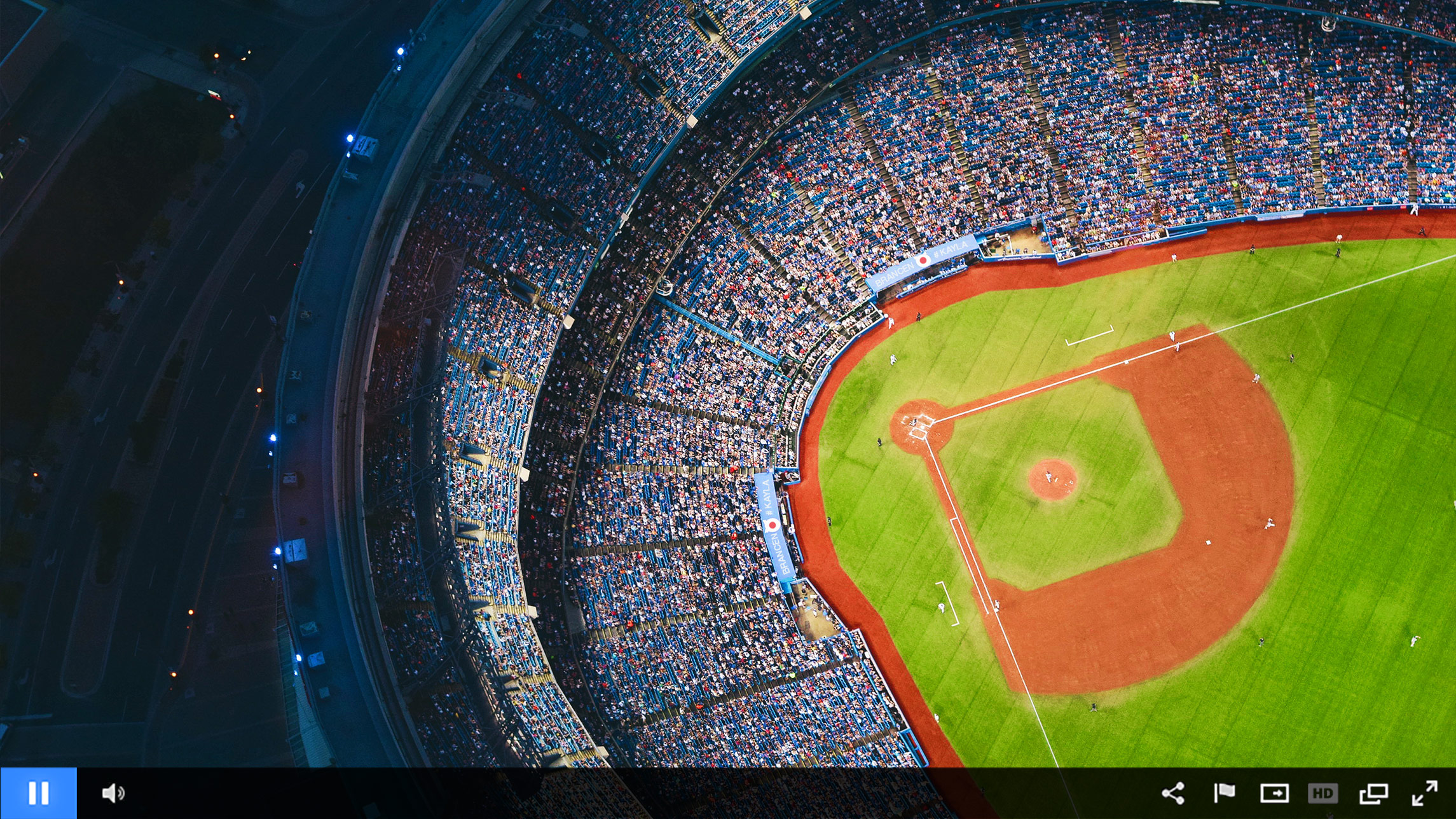
Interested in attracting huge audiences with your video content, be it a sports game or a large scale enterprise town hall? Worried about how a delivery infrastructure might handle it?
The live streaming market has continued to mature. We’ve come a long way from 1995 when RealNetworks streamed the first baseball game or when Seattle’s Paramount Theater placed the first symphony online. As that market has matured, the desire for improved performance has increased in tandem. One method of achieving that is moving beyond a single point of end viewer distribution. Rather than rely on a single network or CDN (content delivery network), organizations can achieve mass scale through utilizing a multi-CDN approach.
This article addresses the benefits of utilizing multiple CDNs for video delivery, use cases and discusses an enhanced software defined approach for improved delivery. If you want a deeper dive on this topic, download this Scaling Video Delivery to Reach Massive Audiences white paper.
- What is a CDN?
- Benefits of using multiple CDNs
- Deployment of multi-CDN strategies
- Software defined delivery approach
- Use cases for multi-CDN delivery
- Optimizing for internal audiences
- Additional assets
What is a CDN?
A CDN is a set of servers, usually located in diverse locations, that are used to deliver content. There are several advantages to CDNs over a single server setup, although speed and capacity are often highlighted. Speed in that their diverse locations make it easier for a server to be closer to your end viewer. The closer the server is to your viewer the less latency as well. That’s because the information does travel over a physical distance. As a result, decreasing that distance reduces the latency. Capacity is boosted as well rather than putting the full strain on one server. This is because that delivery load is distributed.
Learn more about CDNs in general from this What Is A Content Delivery Network article.
Benefits of using multiple CDNs
When one considers the advantages of using a CDN, the benefits of using multiple CDNs is easier to grasp. When additional CDNs are added to the mix, that edge server footprint of where your content will be distributed increases even more. Maybe one CDN is stronger in parts of Asia while another is stronger in parts of North America. By tapping into both, the content owner is getting a more global friendly solution. Naturally, this benefit also applies to capacity as well, which also increases reliability. If a series of edge servers become congested, then another CDN might be an ideal solution to manage the traffic. As a result, the multiple CDNs can work as backups for one another. Regardless of how much uptime a CDN might have, there is an advantage to having a solution with built-in backup sources.
Deployment of multi-CDN strategies
With the benefits clear, organizations have been using multi-CDNs as part of their delivery strategy. This is particularly true when your organization does something that is resource intensive, such as video delivery.
Research has been done to show that large companies like LinkedIn, Twitter and eBay use a multi-CDN approach. In fact, up until recently, even Netflix and Facebook used multi-CDN strategies before placing a lot of investment on building out their own delivery networks.
Once you decide that a Multi-CDN strategy is right for your business, the next question is how that solution is deployed. This can take the shape of either using an aggregator or using a load balance service. Both have their advantages. An aggregator is a service that already combines CDNs, offering an easy-to-use and less expensive solution for deploying a multi-CDN strategy. A load balance service, on the other hand, is more complex to setup, but offers greater flexibility in delivery. This approach does, though, require signing up for the other CDNs and then maintaining them. This often causes this approach to be the more expensive route as well.
Software defined delivery approach
 At IBM Watson Media, we have developed a robust aggregator solution specifically designed toward improving video delivery. Called SD-CDN (software defined content delivery network), this approach currently combines over 8 different CDNs. As a result, it gives content owners an incredibly robust delivery solution. Built around offering quality of service (QoS), this process adds an extra layer of improving the end viewer experience. This method involves receiving data about the streaming performance and optimizing based on that data. For example, detecting a viewer is experiencing buffering and managing delivery between the many sources available to resolve this. Furthermore, IBM’s video streaming services have a live monitoring console available to track this performance. This lets content owners gain visibility into which viewers experienced buffering and even what CDN was used to deliver them content.
At IBM Watson Media, we have developed a robust aggregator solution specifically designed toward improving video delivery. Called SD-CDN (software defined content delivery network), this approach currently combines over 8 different CDNs. As a result, it gives content owners an incredibly robust delivery solution. Built around offering quality of service (QoS), this process adds an extra layer of improving the end viewer experience. This method involves receiving data about the streaming performance and optimizing based on that data. For example, detecting a viewer is experiencing buffering and managing delivery between the many sources available to resolve this. Furthermore, IBM’s video streaming services have a live monitoring console available to track this performance. This lets content owners gain visibility into which viewers experienced buffering and even what CDN was used to deliver them content.
Use cases for multi-CDN delivery
At its essence, any content streamed through a multi-CDN connection would benefit from the added reliability and increased global reach. That said, the following are some use cases that benefit more from this.

Keynote
A growing space, keynote sessions have become big events that attract large online viewership. This audience can be geographically diverse, even taking into consideration time zone differences. In fact, they can often resonate as a highlight from a larger event. An event can have a single, big keynote, but can also breakout into many keynote sessions. Salesforce’s Dreamforce, for example, offered a huge variety of speakers across many keynotes. As the celebrity status of keynote speakers increase so does the oppurtinity for a session to go viral. Having a multi-CDN solution helps to ensure the resources are there as needed. This offers a backbone that supports an unpredicted breakout session or to accommodate a truly massive audience size on an event’s main keynote.
Product launches
When it comes to video marketing activities, generally more budget is devoted to a product launch. This is especially true versus other strategies such as a webinar or streaming a product demo. This is with good reason as a product launch gives a first impression and also will grow to represent not just the product but also the brand. If a company spends too little on production values then the magnitude of the event will feel diminished. This increase in spending comes with it a need to maximize ROI, though. Consequently, this is done through boosting eyeballs watching the broadcast. Using a multi-CDN solution can be a great way to make sure that when the stream goes viral that larger audiences can be served the content reliably.

Playoffs
Sports are in the moment type of media. Their value is tremendous when viewed live and diminishes the older the content gets. Fans prefer to see the winning play being made rather than view it as a post game highlight. While all sports content benefits from a multi-CDN approach, playoffs and finals are those that attract the largest audience. Not only that, but sports content can create a large concentration of viewers as well. Did your state or school’s team make the playoffs? Chances are there will be a disproportionate ratio of viewership from that area if so. While a lot of the value in CDNs is a more distributed presence for edge servers, issues can still arise. This can take the shape of certain edge servers being overloaded from concentrated demand. A multi-CDN approach can bolster presence in that area, offering not just increased worldwide capabilities but also to protect against local congestion.
As mentioned, all live streaming benefits from a multi-CDN approach. A lot of media and entertainment use cases, from musical concerts to red carpet events, would also apply. Given the boost to reliability, use cases could expand to any “mission critical” broadcast. Even internal streaming, like a town hall, would benefit greatly from this. That said, internal streaming has a separate challenge that can arise.
Optimizing for internal audiences
Large, internal audiences present different challenges for broadcasters. A multi-CDN approach helps for content delivery to large audiences. A new hurdle can arise, though, in the form of a very concentrated audience. For example, 300 employees watching a town hall from the same connection will likely be problematic. This is especially true if those employees are trying to stream from a 50 mbps connection. Regardless of the CDN solution, this scenario will cause local congestion issues for their ISP. It also forgoes any chance of these employees watching content in high definition. As a result, IBM has developed an internal, hybrid cloud solution called ECDN (Enterprise Content Delivery Network). This optional, virtual appliance acts as a local edge server for an office, university or other location. It reduces strain on the network through caching and delivering a single version of a video asset to all viewers at that location. So, in the above example, rather than 300 different users having to download the stream, a single version of the HD resolution would be sent.
For IBM’s video streaming services, this technology works as part of SD-CDN. This offers both a solution for “on premise” viewing while still being able to tap into a large, multi-CDN setup for outside viewers.
Additional Assets
We’ve only touched the surface of both video delivery and an optimized, multi-CDN approach. To learn more on IBM’s SD-CDN technology, which focuses on delivering optimal video quality through multiple CDNs, check our SD-CDN white paper. For more information on how IBM’s video streaming services are able to scale live streaming, including a look at managing CDN delivery and adaptive streaming, read our Live Video Delivery System Built for Scalability white paper.
Want to tap into IBM’s scalable solution for video delivery?